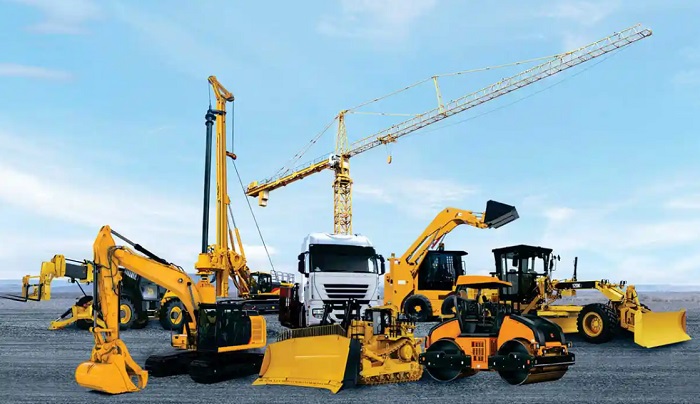Record-Breaking Equipment Sales In North America In 2023
In the September/October 2023 edition of International Construction, it was reported that North American equipment sales, with the US accounting for over 90%, hit a record high in 2022, and a minor decrease was expected in 2023. However, the anticipated downturn did not occur. Instead, more than 330,000 construction units were sold in 2023, marking […] The post Record-Breaking Equipment Sales In North America In 2023 appeared first on World Construction Today.

In the September/October 2023 edition of International Construction, it was reported that North American equipment sales, with the US accounting for over 90%, hit a record high in 2022, and a minor decrease was expected in 2023.
However, the anticipated downturn did not occur. Instead, more than 330,000 construction units were sold in 2023, marking an 8% increase from the previous year and setting another sales record for the region.
The high sales levels reflect the increased federal funding for construction activities, especially in infrastructure. This is expected to keep the industry busy through 2026.
While analysts are doubtful about the possibility of the country breaking the equipment sales record for three consecutive years, the rise in megaprojects will necessitate more advanced machines than ever before. This indicates that, aside from machine sales, the industry is poised for another strong year of construction revenues.
Labor shortage problems
What’s most interesting about the construction industry’s success in the US in 2023 is the significant progress it made compared to its counterparts. For instance, equipment sales in Canada decreased by around 5% in 2023, and the European market experienced a similar decline, according to Chris Sleight, managing director of Off-Highway Research.
Sleight predicted a decrease in 2024 but mentioned that even a 10% decline would still put equipment sales close to a historical high in the long term. A decline could also help alleviate concerns about inflated inventory figures in the rental segment.
Off-Highway Research anticipates that North American equipment sales will exceed 300,000 units again, marking the first time in history that the continent has reached that level for three consecutive years. This should help maintain the construction equipment market at very good levels in 2024. Unit sales might be lower due to the slowdown in residential construction, affecting the demand for high-volume compact equipment. However, the shift toward infrastructure and larger-scale non-residential building means fewer, larger machines, which is beneficial for both the sector’s value and the margins of those who sell them.
Anirban Basu, chief economist for the US-based Association of Builders and Contractors (ABC), expressed surprise at the industry’s success in 2023. He admitted to having been too pessimistic the previous year and explained that he had thought 2023 was going to be a challenging year for the United States, but it turned out not to be in many ways.
The construction industry also benefited from high consumer spending across the board, which prevented the country from entering a long-expected recession. Extensive federal spending from the Infrastructure Investment and Jobs Act- IIJA, the Inflation Reduction Act- IRA, and the Creating Helpful Incentives to Produce Semiconductors- CHIPS Act also helped avert an economic downturn and injected funds directly into construction projects.
However, the industry faced challenges due to a persistent skilled labor shortage throughout the year, which, in some cases, worsened. This has tempered the optimism for 2024.
While some regions struggled with construction employment figures, other regions experienced a reduction in worker shortages. The largest increases in construction job growth (from 6.5% to 10.7%) over the last four years occurred in Texas and Florida among the major metros in the US. California saw the largest decrease in the construction employment rate, and the metros of Baltimore, Boston, and Portland, Oregon, also saw significant declines.
Ken Simonson, chief economist for the Associated General Contractors of America- AGC, stated that the primary concern for most contractors, whether in infrastructure or other areas, was finding enough labor to complete the projects. He added that although not every state experienced an increase in employment, more would have if there were enough workers available.
Infrastructure & Manufacturing Megaprojects
If the US is to exceed expectations once again, it will likely result from favorable conditions in manufacturing and infrastructure megaprojects. According to Sleight, the growth in the construction of manufacturing facilities following the passing of the CHIPS Act is substantial. He illustrated the sector’s growth by comparing the value of the manufacturing-facility construction segment from 2017-2021 with the post-2022 results.
Sleight explained that the CHIPS Act provided significant impetus for the construction of manufacturing facilities. U.S. Census Bureau data shows that this market was valued at $66 to $78 billion annually from 2017-2021. However, in 2022, it surged to $106 billion, and the final total for 2023 is likely to be in the range of $150 to $180 billion.
The release of ACSE’s recent economic study, titled Bridging the Gap, has sparked some hope for an improvement in the US economy from its current C- grade. In comparison, their 2021 economic study was named Failure to Act.
Swallow believes that the positive effects of infrastructure investment will have a lasting impact, but there are doubts about the long-term sustainability. Funding for the major infrastructure packages is expected to continue until 2026, raising questions about what happens afterward.
According to the report, the analysis covers a period of 20 years (2024 – 2043) and presents two scenarios. One scenario assumes that the new level of infrastructure funding sets the standard for future funding levels – referred to as the ‘Continuing to Act’ scenario. The other scenario assumes that after 2026, infrastructure investment will return to the funding levels from before 2022, known as the ‘Snapback’ scenario.
Despite it being an election year for the US, Swallow believes that the immediate and short-term effects of infrastructure investment have been fruitful. She also emphasizes that the need to improve national infrastructure is a bipartisan issue, backed by polling data showing bipartisan understanding of the importance of infrastructure funding.
Given the flurry of infrastructure and construction activity, there has not been a corresponding increase in available workers, largely due to a shortage of skilled labor. The US construction industry’s unemployment rate stood at around 3% between 2019 and 2020, but as of February 2024, it has surpassed a 10-year high of 5%.
The skilled labor shortage, coupled with rising consumer credit card debt and high interest rates, could potentially weaken the resilient US construction market. Even with funding and projects in the pipeline, the extremely tight labor market could lead to delays and decreased profits.
According to ABC’s Basu, there were roughly 413,000 construction job openings at the beginning of the year, an increase from the pre-pandemic figure of around 300,000. Contractors have been expressing concerns about the lack of skilled workers even before the pandemic.
Sleight shares the view that 2024 is unlikely to replicate the surprising growth seen in 2023. He believes that construction backlogs are starting to decline, and confidence indicators and expectations point toward small increases in work and staffing levels.
Despite the possibility of a slowdown, US construction activity remains notably high, surpassing levels in other countries. This high level of construction activity in North America suggests that inflation in materials prices and labor costs may stabilize.
The post Record-Breaking Equipment Sales In North America In 2023 appeared first on World Construction Today.

 machineryasia
machineryasia 







